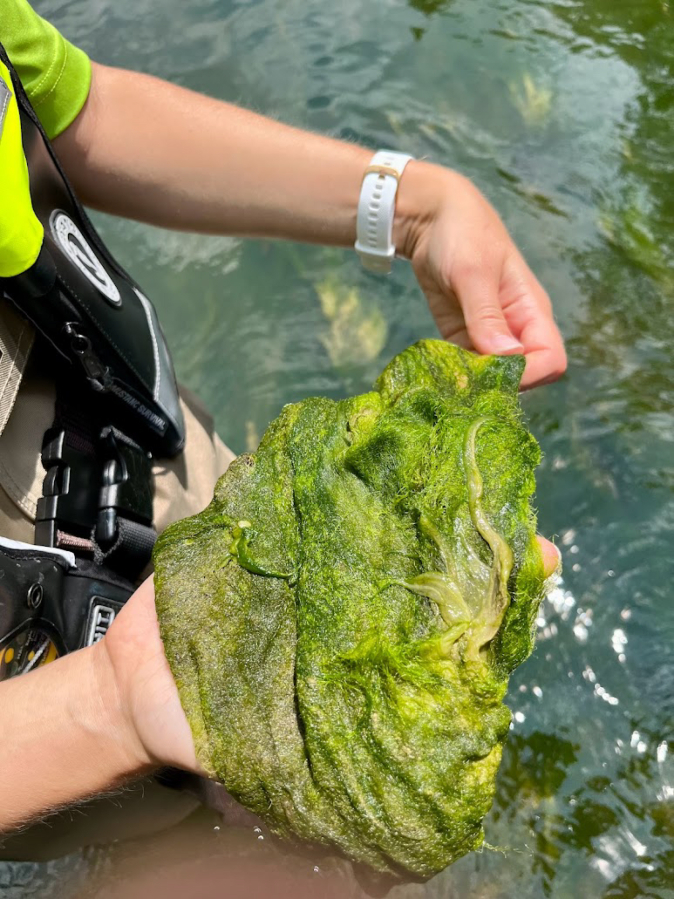Clark County Public Health is warning residents of new dangers related to algae growths in local waterways. Benthic (that is, at the bottom of a body of water) algal mats found along the Columbia River have been linked to the death of two dogs.
“What we’ve talked about in Clark County for several years is planktonic algae blooms. We’ve been monitoring those in Clark County since 2007. These are the blooms that we see that are mixed into the water column. They collect in scums on the surface of the water,” Maggie Palomaki, environmental health specialist for the county, said during a Wednesday presentation to the Board of Health. “Benthic algae mats are a different type of harmful algae. We first tested these in Clark County in October 2024.”
Rather than being dispersed through the water column, Palomaki said, the algal mats attach to substrate at the bottom of the water. When there is an overgrowth of algae, the mats can detach and float to the surface.
“Since they are attached to the bottom of that body of water, they can appear in fast- or slow-moving water,” she said. “They also have a different texture. They’re very slimy, kind of gelatinous, slippery. So very distinct from the planktonic algae blooms.”
Palomaki said she received a call in October from a woman whose dog had died after being on Ackerman Island in the Columbia River near Camas.




